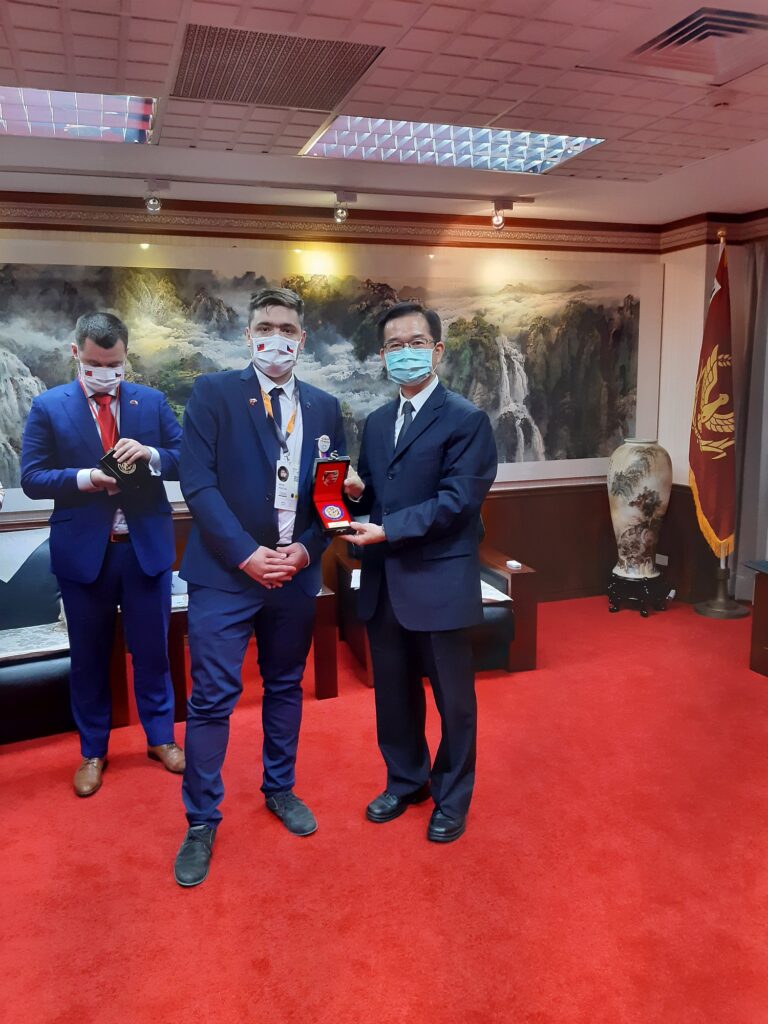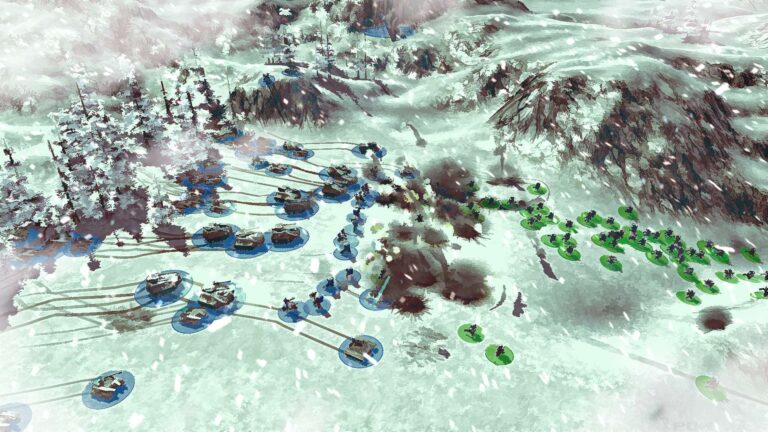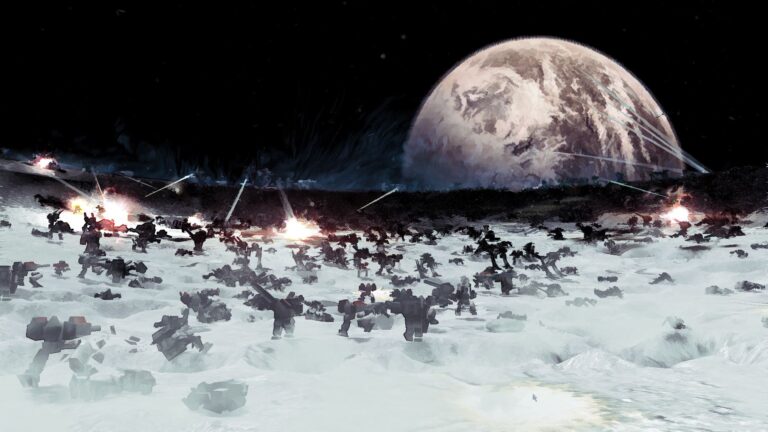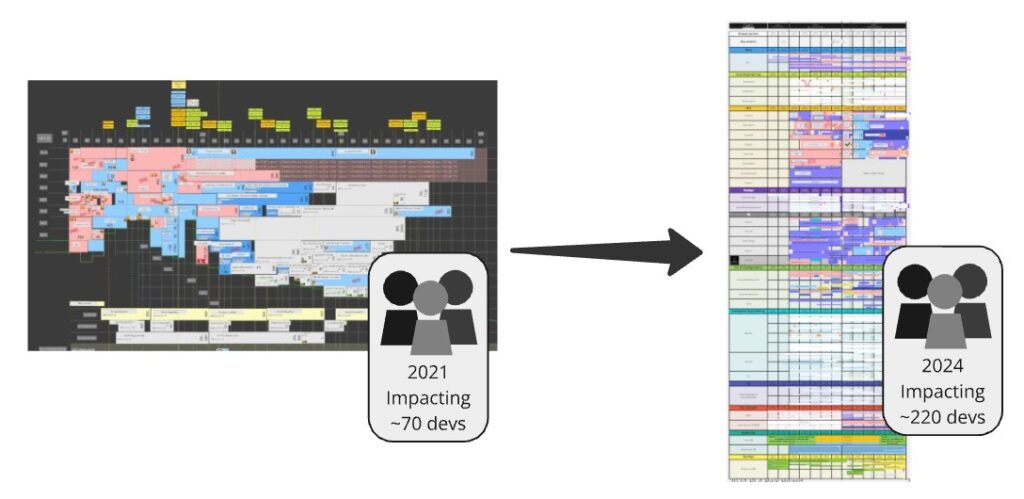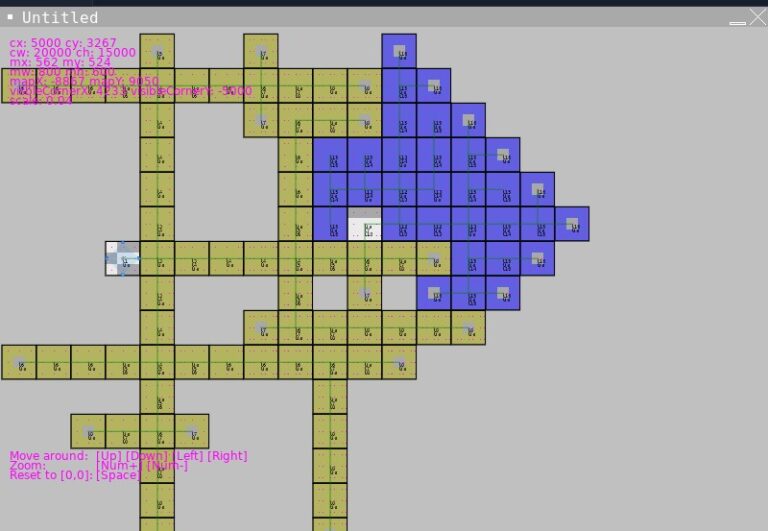Self-managed teams, departments
Personally or in collaboration with experienced people leaders and developers creating new teams in a wide range of environments defined by size (from startup teams up to 400 people company) and also the type of organization (commercial, non-profit or public service) or purpose (delivery, tech. excellence, growth, etc.).
Leading by example, through individual or group training and coaching with long-term dynamics in mind. Making self-sufficient units which are able to regularly contribute to the organization goals and fit its strategy.
Examples: AI department (most recent, ~30 people, 6 teams), multiple Product teams (5-10 people, including C-suite members), multiple Product groups (~50-100 people, 10-20 teams), multiple Indie game dev teams (5-12 people), multiple non-profit organization teams (4-10 people), multiple trade-show/events ad hoc teams/groups (5-40 people).
Scroll down to see in which strategic context I was able to build self-managed teams.
Product: Control Editor & One AI
Game development production, mentoring and events
Supporting communities of GameDev in Prague and SprintRTS by organizing events, supporting individual teams (directly or through mentors) and in some cases personally contributing on projects.
Projects with my contribution: TheDarkShift, Steam Spring 1944, Lumm-E (joined recently)
Projects from GameDev & Charles Games:
- 2024: Caretaker, Market Madness, Heaven, Mortal Rhythm, The Well of the Universe
- 2023: Welcome to hell, Staireaucracy, Mine Flowers, Pleiades, Echomaze, of mice and mice, Mariner
- 2022: Magical lantern, Shadow’s exile, Alient, Juicy Cheeks, Game of Runes, Pastoral
- Other: Silicomrades, GameDev Showcases
Other projects from SpringRTS: Games
Human-like agents I and II university course, Tree Market
7 years of teaching of the AI course at the Charles University in Prague focused on the behavior trees and professional/commercial human-like AI development for military and non-military use-cases.
Product: BETS – open source framework for building behavior trees created by a student team in two years.
Product: TREE MARKET – AI behavior packages market for collaborative AI making (114 packages in 2024).
Taiwan 2020
Member of the Czech Senate delegation to Taiwan led by Miloš Vystrčil.
Supporting Czech and Taiwanese democracy while under unprecedented pressure of the Mainland China. Contributing to the beginning of the global supply chains reorg.
Reflections in Global media: TheGuardian.com, CNN, BBC, aljazeera.com
Reflections in Czech media with my presence: ct24.cz / Senate, Forbes.cz, hn.cz
Reflections in Mainland China media: CGTN, chinadaily.com
Product: nota
Mobility focused real time strategy game nota based on the SpringRTS open source 3D engine and inspired by Total Annihilation (1997).
Product included own distribution channel: notAlobby multiplayer client (Steam compatible), notAserver and notAcolony and during the lifecycle of the product we have produced series of various media content & events – notAjoke!, notAtv, notAmap and organized multiple events for the community (notAtour 2012, notAtour 2014, notAtour 2016).
Product life continued in two spin-offs in the University HLAA course (2017-2024) and web browser game notAspace (2014-2015).
Extreme development practitioner
Introducing rapid high flexibility development techniques into different teams and company environments. Typical motivation: cost or time-to-market reduction, learning acceleration, re-organization, communication and research acceleration, quality assurance, project de-risking.
- 3.5 hour sprints in small prototype games (185 team sprints finished personally, pair or mob programming)
- 1 week sprints for developers and managers to set up new department consisting 6 new teams (~ 400 team-sprints finished)
- commercial hackathon sessions to rapidly explore the market opportunities, indie game jams (~20 ~48-hours events in total)
Company strategy and culture shaping
In collaboration with C-suite create a strategy and shape the company culture to maintain the competitive advantage in the given market for a given product portfolio.
>>> On the right examples of the development positions definitions protecting and growing competitive advantage on highly competitive and innovations driven market identified as following: “learning organization” with “flexible and thinking employees” as the key lever.
Company scale forecasting
Visual easy-to-access board for collaborative complexity estimation and planning allowing roadmap forecasting for ~2 years ahead. Real cost/Estimate:
- from extremes like 120-600 % in 2019
- to 80-140 % in 2023
In the period 2020-2022 I was responsible for planning of approx. ~20.000 man-days a year – both project and product development. At the beginning of the period we suffered from the extreme underestimation of complexity of projects (which resulted in late deliveries, extra costs, etc.) and at the same time from the low productivity of multiple teams.
Key aspect of the solution (which may sound trivial) was connecting the feedback from the failed projects with the people estimating, signing and planning the projects and gamification of the new processes.
Company scale QA automation
Together with an automation team and QA engineers designed, implemented or managed new solutions (technical or organizational) securing the health of the product in various stages of the development cycle.
- Use-cases driven triage of defects (90 % of defects categorized on report)
- 100minutes test (product health report providing alternative to 120 man-days regression test)
- Automation dashboards (TV screens broadcasting product health or team owned tests health to all employees)
- Team-owned tests (defects are distributed automatically, later identified as a local optimization)
- Blockers life-time trackers (defects cost and time to market measurement)
- Virtual users UI testing (image recognition tech. reducing need of testing manually)
























